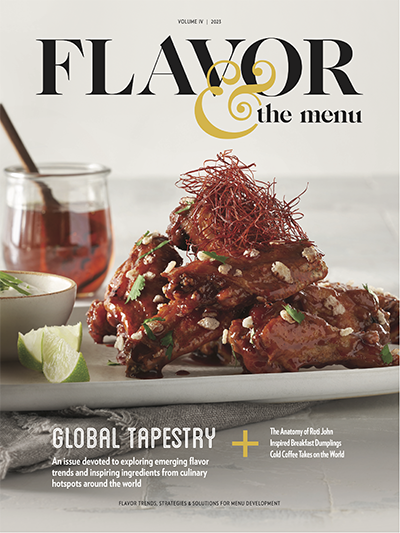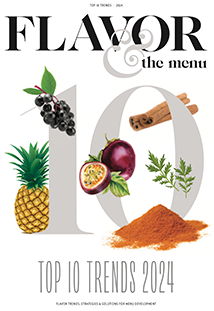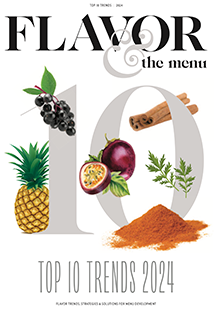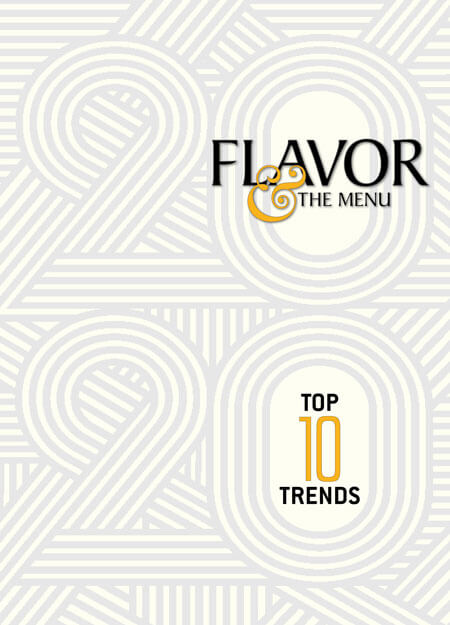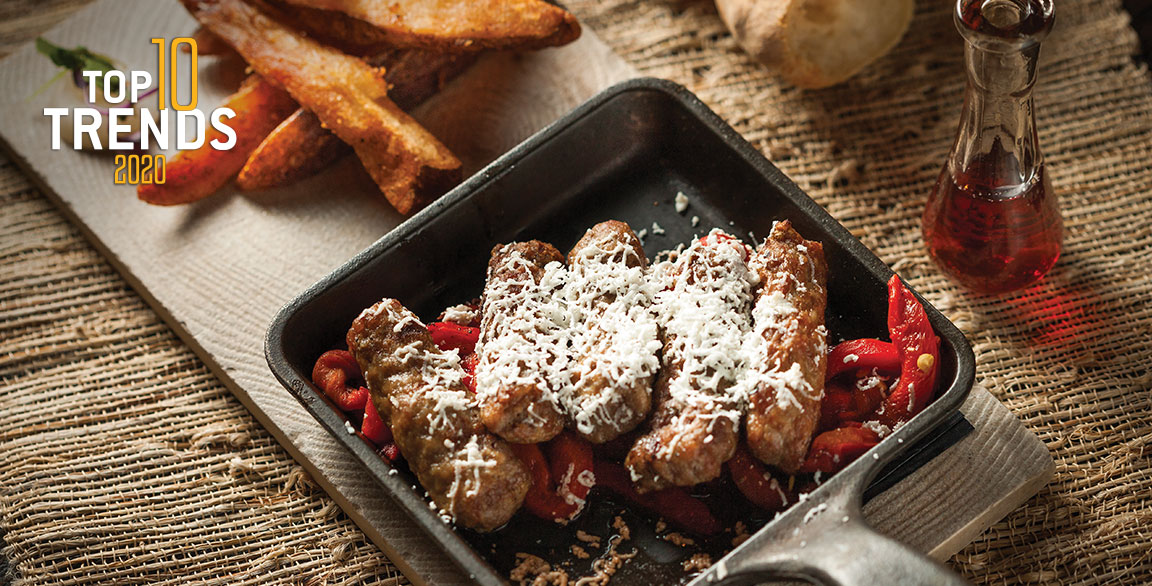

Cross the Adriatic Sea from Italy’s eastern shoreline and you land on the Balkan Peninsula, a geographic area that encompasses countries with an incredibly rich and storied food culture. Those countries include: Croatia, Slovenia, Albania, Serbia, Bulgaria, and Bosnia and Herzegovina.
Their collective cuisine has remained a veiled mystery to most American consumers, unless heritage, hidden neighborhood gems or travel opened it up for them.
Now, a natural driver moving us into the Balkans is that it’s next door to the Eastern Mediterranean, a region embraced by chefs and diners alike in this country. As with most adventures, asking “What’s next?” is part of the thrill.
The zeal for Eastern Med cuisine has helped fuel curiosity about this neighboring region. “American consumers now know what kebabs are like in Turkey,” says Michael Parlapiano, strategy director with The Culinary Edge. “What are they like in Bulgaria? What’s the story behind these Balkan foods? As long as it’s accessible, exploration here satisfies that curiosity about ‘new’ global cuisines.”
The Balkans are also primed for interpretation because of how well their culinary heroes fit onto American menus. Craveable breads are a big part of the culture, like somun, a puffy, light, soft, pita-like bread that some argue is the best in the world.
At Balkan House in Hamtramck, Mich., the lepinja (LEH-peen-ya), another term for somun, houses the restaurant’s burger, called a pljeskavica (PLYESS-kah-vee-tsah), which sees a beef patty seasoned with onion, garlic and red pepper, then charred and served with white onions and a side of kajmak, a Balkan soft cheese. Flavor-rich meats are prevalent in Balkan cuisine, offering menu developers a new playground of seasonings and formats in which to feature them.
Cevapi (CHAE-vap or CHAE-vap-ee) are sausages (without the casing) redolent with spices and can be a combination of pork, lamb and beef, or simply beef. Often served as a family-style platter, they’re also a popular street food, tucked into somun and garnished with onion and ajvar (EYE-var), a roasted red pepper condiment prevalent in the cuisine.
J’s Pitaria, a fast casual in St. Louis, offers a somun handheld boasting 10 grilled-beef cevapi, along with onion and kajmak.
Condiments, as we see time and again, build roads to uncharted cuisines. The ones commonly used in the Balkans sing with possibility: ajvar; kajmak; urnebes, which is a cheese spread spiked with chile flakes; luteniza, a sweet-sour eggplant spread; and fefferoni, a pickled pepper.
“Familiar formats like flatbreads, spices, cheeses and condiments are all easy ways for diners to engage with a new cuisine style, with one foot anchored in the familiar and one step into the foreign,” says Kiley Stone, associate culinary director of SRG.
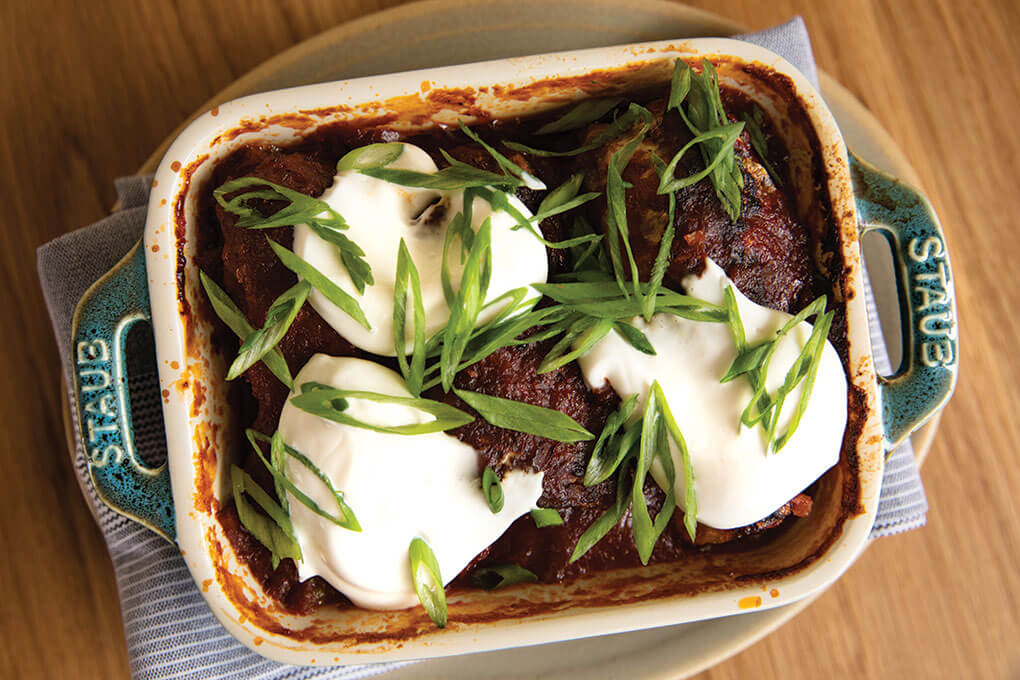 Sandy Noto
Sandy Noto The Balkan Stuffed Cabbage at newly opened Galit in Chicago sees richly seasoned lamb kebabs rolled inside cabbage leaves, covered with tomato sauce, labneh and scallions, then roasted.
COMMUNITY ACCESS
The American story of immigrant communities creating pockets of authentic foods from home is not a new one, but in looking at Balkan cuisine’s rise, it helps to color in the details. “Immigrants have always used their food as a way to share their culture with new neighbors and as a way to welcome other immigrants, helping them find a taste of home,” says Kara Nielsen, principal of Kara Nielsen Food Trends. “A factor driving the emergence of Balkan cuisine is the number of refugees who came here in the ‘90s.” Political unrest and war lead many of them to New York, St. Louis and Detroit, among other cities, bringing with them their food traditions.
That concentration of culture in urban areas helped Balkan cuisine find its footing here. St. Louis’ Balkan Treat Box was one of the first beacons that shone a light on how well this craveable food fits into modern American food culture, first opening a food truck and moving into a brick-and-mortar fast casual in early 2019.
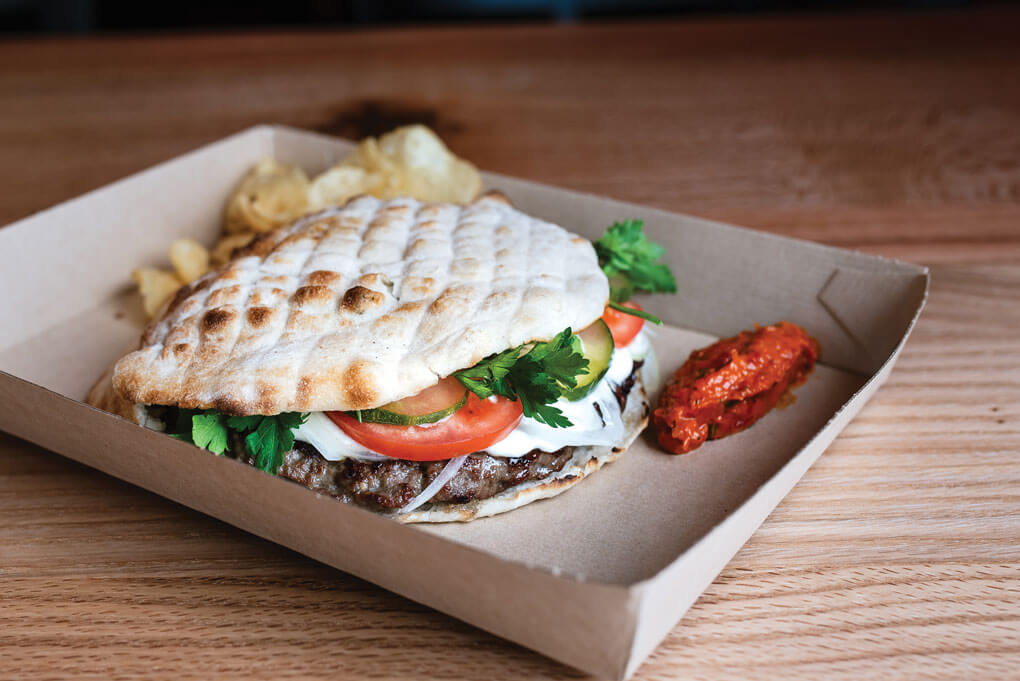 Spencer Pernikoff
Spencer Pernikoff The Balkan burger, at Balkan Treat Box in St. Louis, fits right into American culture. Called a pljeskavica, it features wood-fired beef tucked into somun with kajmak and ajvar.
“There’s opportunity with burek because of the comforting and delicious profile that is customizable,” says
Ian Ramirez, director of culinary innovations and operations with Creative Dining Services. “I’ve had it with spiced lamb, butternut squash and spinach, where the dough is rolled into a spiral, baked then cut into slices. It would work well as a bar snack or shareable.”
J’s Pitaria also makes somun, the Balkan pita said to outshine all others. “In Bosnia, there’s a centuries-old tradition behind somun,” says Josi Jahic. Made with only flour, salt and cold water, it’s baked at an extremely high temperature, ready in about 45 seconds. “It’s sprinkled with black seeds, which give it a special flavor and an aroma that lures people in,” she says. With global flatbreads a menu mainstay today, somun offers a new format for pairing with shareables or as a carrier for handhelds.
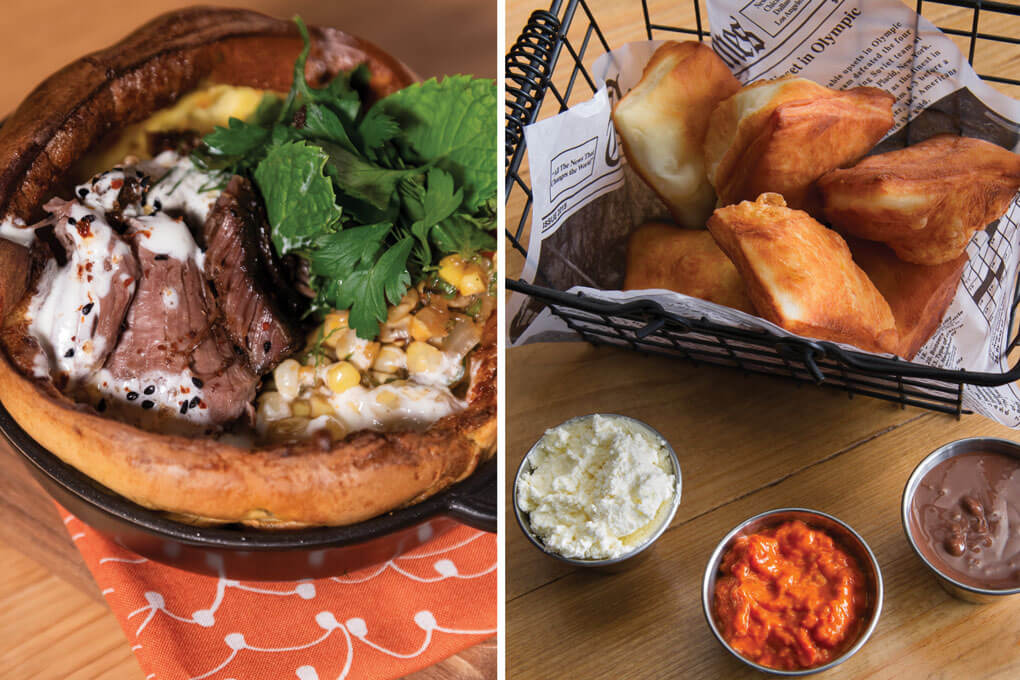 Left: American Lamb Board; right: J’s Pitaria
Left: American Lamb Board; right: J’s Pitaria American interpretations of Balkan savory and sweet classics: Liz Barwick, chef de cuisine of Sarma in Somerville, Mass., created a Lamb Shoulder Borek (left), while fried dough bites called ustipci are served with kajmak, ajvar or Nutella at J’s Pitaria in St. Louis (right).
MODERN MOVES
Authentic outposts, like J’s Pitaria, Balkan House and others throughout the country, have laid the foundation of familiarity while setting standards for authenticity of experience. Concepts like Ambar, a modern Balkan restaurant with locations in Washington, D.C., and Arlington, Va., broadcast Balkan foods through a modern American lens. They help move this cuisine from niche to mash-up and are on the front edge of adoption. Ambar offers approachable Grilled Chicken Sliders that pop with intriguing flavor, thanks to an ajvar marinade and cucumber yogurt. Its Mezze Platter is the Balkan’s answer to charcuterie, with beef and lamb prosciutto, spicy pork salami, ajvar and aged kajmak cheese.
Zahav, a modern Israeli restaurant in Philadelphia, is dipping into the Balkans with its Bulgarian Beef Kebabs. “The kebabs are flavored really simply with onions and parsley, and we add club soda to the mixture so that it gets light and bouncy,” says Michael Solomonov, Zahav’s chef/co-owner. “We also cook them to medium/medium-rare, which is unique for kebabs.” He pairs them with luteniza, an eggplant and pepper condiment with sweet and sour notes that complement the kebabs nicely. “It’s also great on bread—I love to eat the kebabs on a slice of seedless rye with luteniza on top,” he adds.
Solomonov is keen on Bulgarian cheese, too, and sees potential for it outside of Eastern Europe. “It is really phenomenal! It’s so creamy, sour and tangy in the best possible way—it just tastes super fresh,” he say. “It goes really well with watermelon and olives, but it’s also awesome served plain and drowned in olive oil.” That kind of excitement from Solomonov, a champion of global culinary hot spots, invites more menu developers to play with Balkan ingredients.
Sarma, a modern Mediterranean restaurant in Somerville, Mass., moves seamlessly around the Adriatic and the Mediterranean, working with a playbook driven by creativity of flavor combination. Liz Barwick, chef de cuisine, developed a Smoked and Roasted Lamb Shoulder Borek. This baked and filled pastry took top honors in the American Lamb Board’s 2019 Lamb Jam competition. Sarma demonstrates how the borek can move into a modern mash-up with its Dutch Baby Borek with lobster, charred scallion and tomato-chile butter.
Successes with Eastern Med fare drive exploration into the Balkans. “Ushered in by familiar Mediterranean foods such as falafel, shawarma and hummus, items like Balkan meats, flatbreads and condiments offer safe exploration for consumers,” says Liz Moskow, consultant and trend analyst. Balkan cuisine, on the front edge of the trend cycle, entices because it promises consumers a taste of the Old World, but reimagined into modern, approachable dishes that lead with flavor.
Balkan Best Bets
By Chris Koetke
Using Turkish cuisine as a jumping off point into the Balkans is a good strategy. This part of the world is a central point, geographically, where the Middle East and Continental Europe meet, so it’s a natural culinary progression.
The opportunity here is to study these cuisines and find the entry points that would easily resonate with American tastes. For instance, the legendary yogurts of the region made from indigenous cultures, the sausages and cured meats, the plethora of grilled meats and seafood, and the unique phyllo-based pastries all provide basis for inspiration.
Two Balkan menu concepts should be top of mind: borek and sarma. Boreks are savory pastries made with thin phyllo-type doughs or sometimes with thin sheets of pasta. Sarma is made from whole leaves of fermented cabbage—a perfect extension of the fermentation craze and part of an incredibly comforting cuisine.

